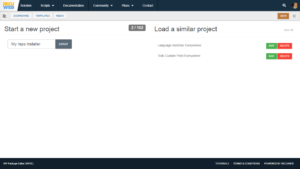
The most comprehensive RSS feed generator specifically tailored to meet the needs of publishers wanting to optimize an individual Google News Editors’ Picks RSS Feed. Creates both a homepage and section-based feed topic-specific.
Customize required feed images, names, titles, descriptions and more! Exclude articles from feeds and enter custom meta descriptions from the lightweight, custom meta box located on post.php (edit) screens.
In order to have your website included in Google News, you will have to suggest it for inclusion first. This plugin is nearly pointless without site inclusion.
Serious news sites should consider upgrading to the WordPress Google News Plugin to take advantage of all tools available to Google News Publishers and optimize their site for Google News.
RSS Features:
- Set default values and customize RSS feeds
- Branding matters! Add required images/logos to EACH Google News Editors’ Picks RSS Feeds
- Exclude/include articles from the feeds from lightweight custom meta box
- Custom meta box includes powerful qTip2 tooltip helper popup window functions
- Use Custom Meta Box to tailor feed-friendly description for news feeds. (A big deal when exporting RSS picks)
- Ping Webmaster Tools when feeds are updated with smart ping technology
- Google News Publisher Help Forum Resources menu, including feed validator
- Easy submission to set Editors’ Picks RSS feeds in Google Webmaster Tools
- Called the “must-have WordPress extension” by Google News Help Forum staff!
Premium features:
- Easy Single & Multi-Site Setup: Set easy-to-override default values for news sitemap and customize RSS feeds
- Branding Matters: Add required images/logos to EACH Google News Editors’ Picks RSS Feeds
- Write It Right: Use Custom Meta Box to tailor feed-friendly description for news feeds. (A big deal when exporting RSS picks)
- Only The News: Exclude articles from XML Google News Sitemap and news feeds from lightweight Custom Meta Box
- Easy & Lightweight: Custom Meta Box includes powerful qTip2 tooltip helper popup window functions
- Get Featured On Google News: Add standout tag to standout content to highlight exceptional journalism and get featured on Google News
- Use It, Not Abuse It: Standout Tag PLUS Tracker© tracks number of articles tagged as standout content to ensure compliance with Google terms of use
- Search Engine Optimization: Correctly add up to 10 news_keywords metatag for SEO | news_keywords metatags Vs. XML tags
- Give Credit Where Credit Is Due: Include both syndication-source metatag and original-source metatag (i.e. guest or re-published contributor content)
- Get Articles Indexed Fast: Generate feature-rich XML Google News Sitemap that will get your stories up on Google News in minutes!
- Find Interested Readers: Add up to 12 news:keywords XML tags to news sitemap that will get your stories indexed in the correct location, fast!
- Google Finance Pays: Add up to 5 news:stock_tickers XML tags to news sitemap that will get your stories indexed on Google Finance, fast!
- Google Hates Spammers: Ping Webmaster Tools when news sitemap and RSS news feeds are updated with smart ping technology
- Get A Clue: Expanded Google News Publisher Help Forum Resources menu, including feed validator, Associate YouTube, etc.
- Easy Integration: Easy submission for XML News Sitemap and Editors’ Picks RSS feeds to Google Webmaster Tools
WordPress Google News Plugin 2.0 Release Announcement:
- Ability to add Subtitles without theme coding
- Schema In-Depth Article Markup
- Schema Organization Markup
- Social Network Knowledge Graph
- Schema Itemprop tags and other features prioritized by Google on the Google News platform
- Changed “Exclude” articles from Google News Editors’ Picks feeds to “Include” articles
- Added WP admin top menu bar for convenient access to multiple features
Add On
- Post to Article Label conversion
What is the Post to Article Label conversion add-on? WordPress is tailored to blogs even after all these years. News organizations publish “Articles,” not “Posts.” Schema relies on “Article” markup, not “Post” markup. So, we should, too. The conversion will change the label on the WP dashboard and output to Article(s), without destroying past projects.
And there’s more…
Upgrade to the WordPress Google News Plugin or visit WP News Plugins to learn about consolidating your publisher options into one, lightweight server-load saving plugin.
Multi-Site Compatible
This plugin, unlike some others, is fully Multi-Site compatible. The feeds work in the Network settings and you can copy the settings from one blog to another, or make blogs default to the settings for a specific blog.
Find answers for Google News-related questions in the Google News Help Forum
Tags
Google News, Editors Picks, RSS, RSS feeds, feed generator, Google, seo, plugin, news sitemaps, google webmaster tools, webmaster tools
Download & install the zip archive
The plugin package installer can be downloaded from the WP2E project tab called “code”.
1 – Select the version to download if this option is available otherwise the “latest” version of the main plugin will be used.
2 – After downloading the zip archive install the plugin package installer in you local environment and activate the script from the plugin list.
3 – Under the section “Plugins” of the admin dashboard you should see a new “Dependencies & Licenses” link. Follow the instructions from this panel to finalize the installation of the missing dependencies.
- Give a name to your project
- Download the Installer Package
- Install & activate the plugin locally
- Install the suggested dependencies
Tips: Use the WP2E panel to add/suggest new dependencies to the local installation. Press F5 in the list of dependencies if the changes are not displayed right away.




